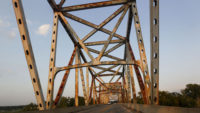 |
| Moore |
Moore, a 34-year WJE veteran, "was involved in many of the firm's most significant structural investigation assignments," says President William Nugent.
These include a probe of a partial 1999 parking-garage collapse at Vanderbilt University in Nashville, load testing of LaGuardia Airport's overwater runway extensions and evaluation and repair of steel framing in New York City's landmark Woolworth Building.
In the late 1990s, Moore led design, construction and operation of a U.S. Federal Highway Administration center in McLean, Va., that was termed the world's first to evaluate nondestructive methods (NDE) in bridge testing to end what had been a confusing process for states (ENR 10/14/96, p. 14).
The center pioneered research in use of ground-penetrating radar, ultrasonic testing and thermal crack detection, among other technologies, and paved the way for new federal legislation on qualifications of U.S. bridge inspectors, says Glenn A. Washer, former FHWA center program director who now teaches engineering at the University of Missouri, Columbia.
"His contributions made the FHWA center an international leader in the field of NDE for highway bridges. These efforts helped spur the increased and widespread use of many NDE technologies that had formerly been little-used laboratory tools," says Washer. "It was a very diversified and complex set of assignments. Mark led these with consistent excellence and quality that made the project a great success."
Washer says center research on visual inspection for highway bridges "led directly" to changes in federal inspection standards and "still is the only comprehensive study of the reliability of inspection practices applied to the 600,000 bridges in the U.S. It is a widely referenced document by other industries searching to improve inspection practices for civil structures."





Post a comment to this article
Report Abusive Comment